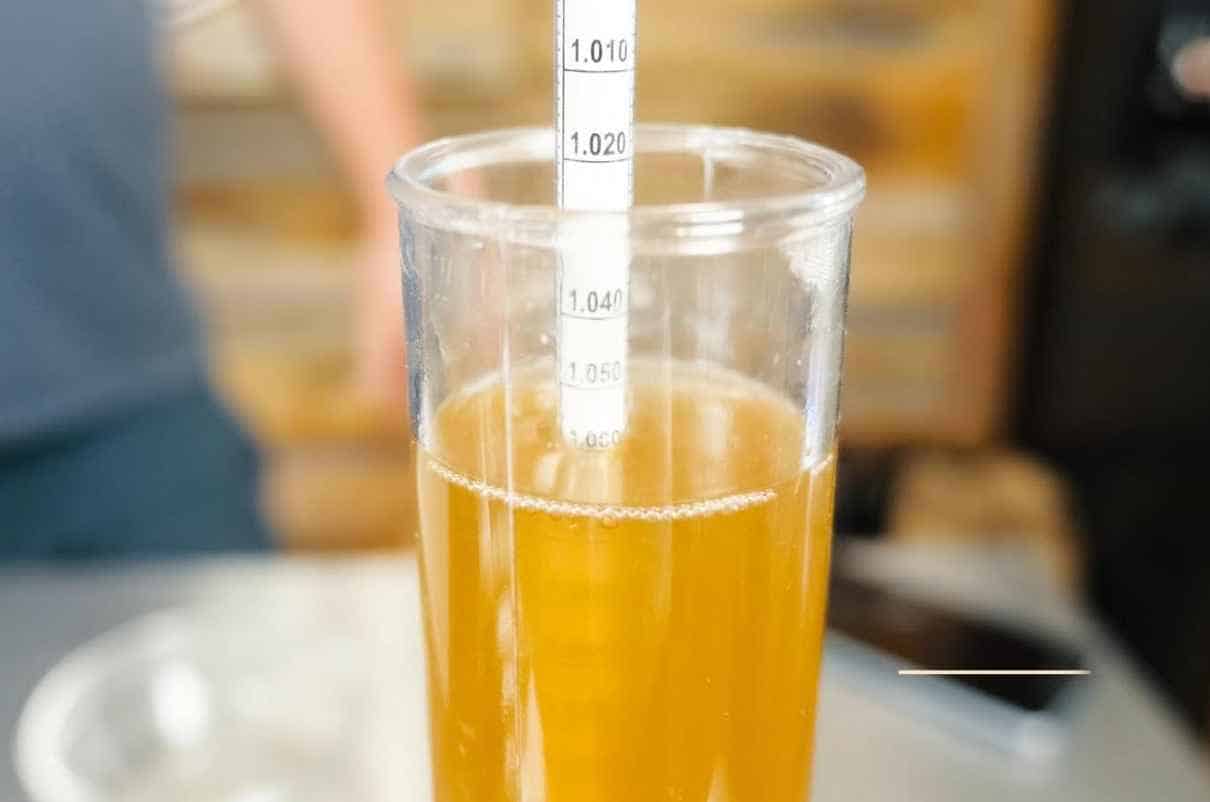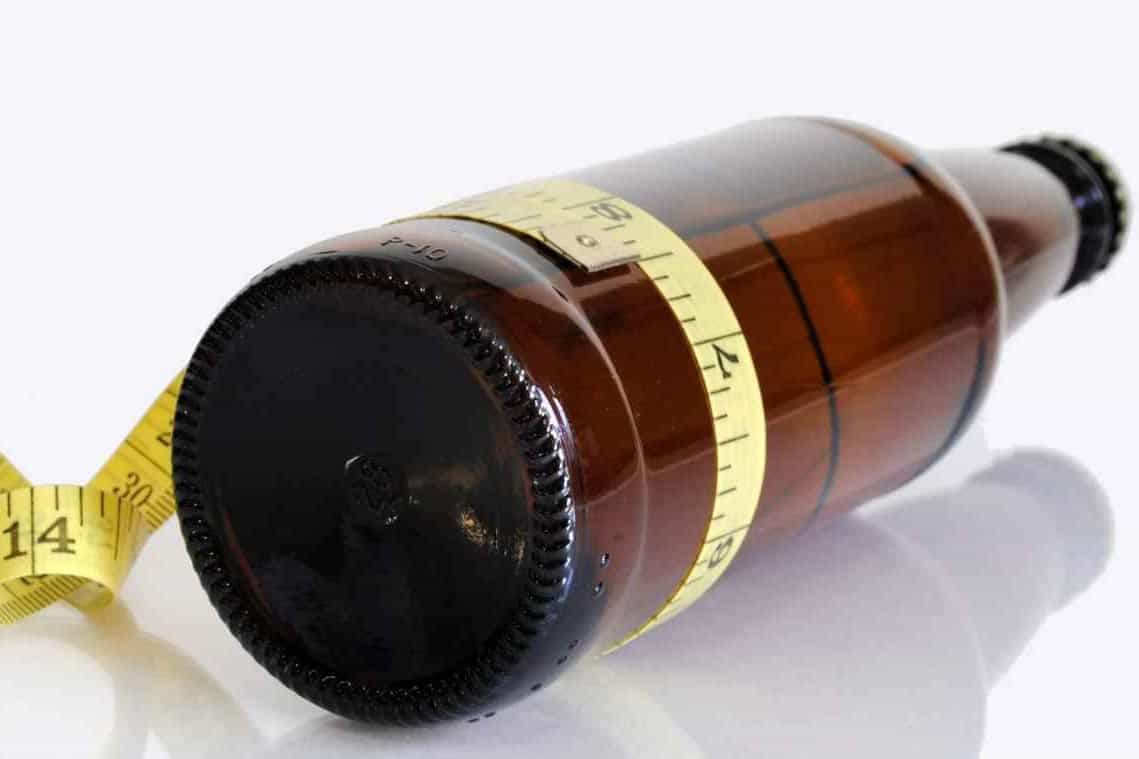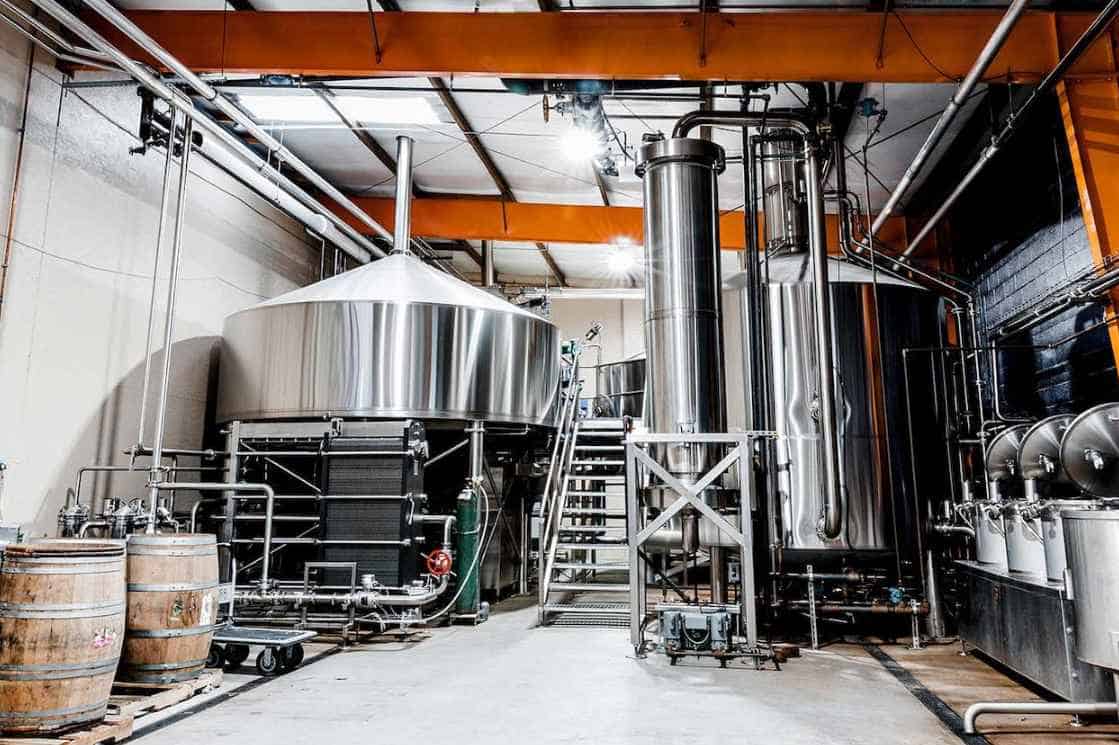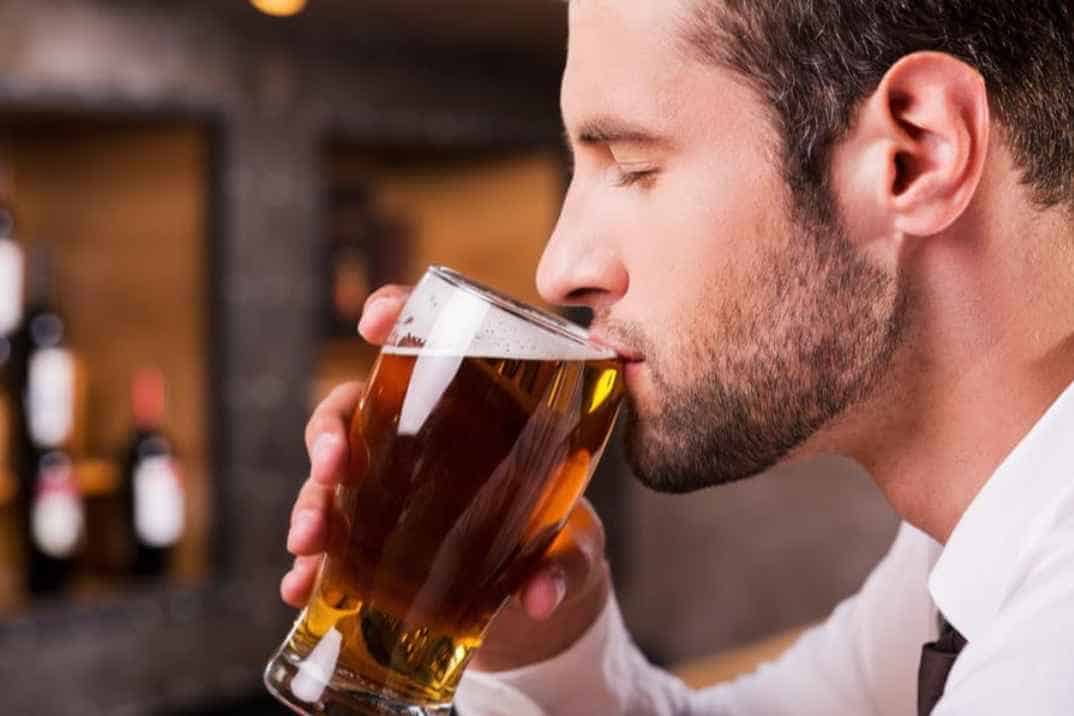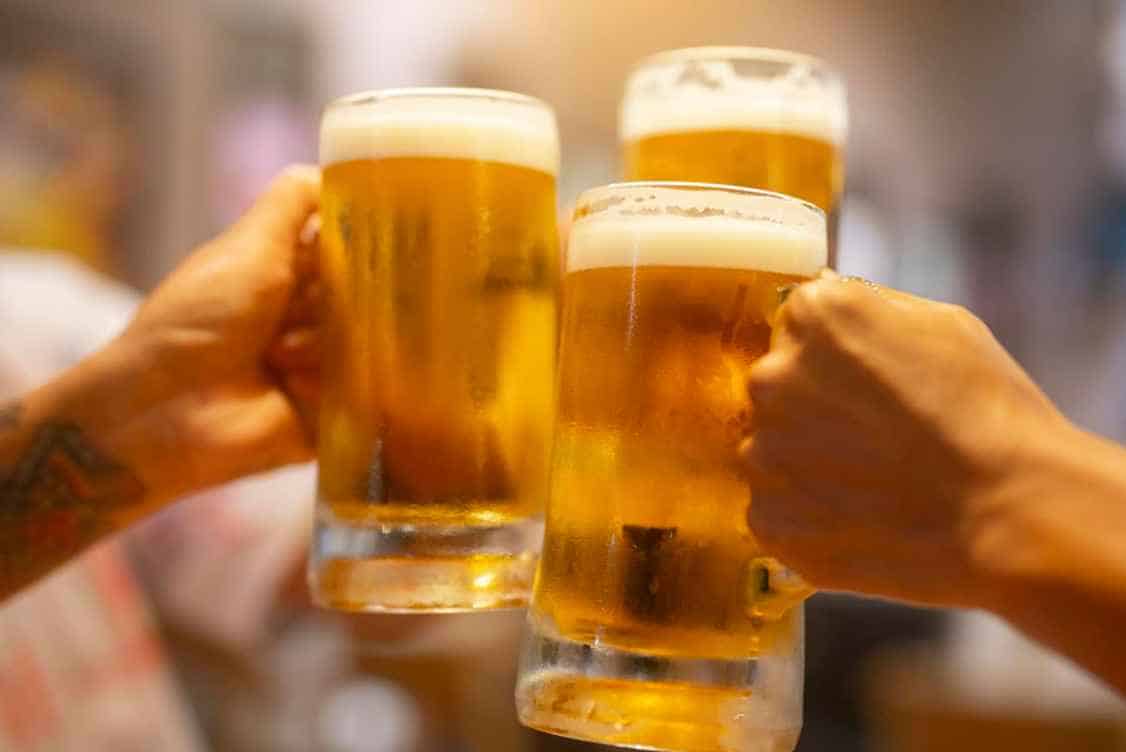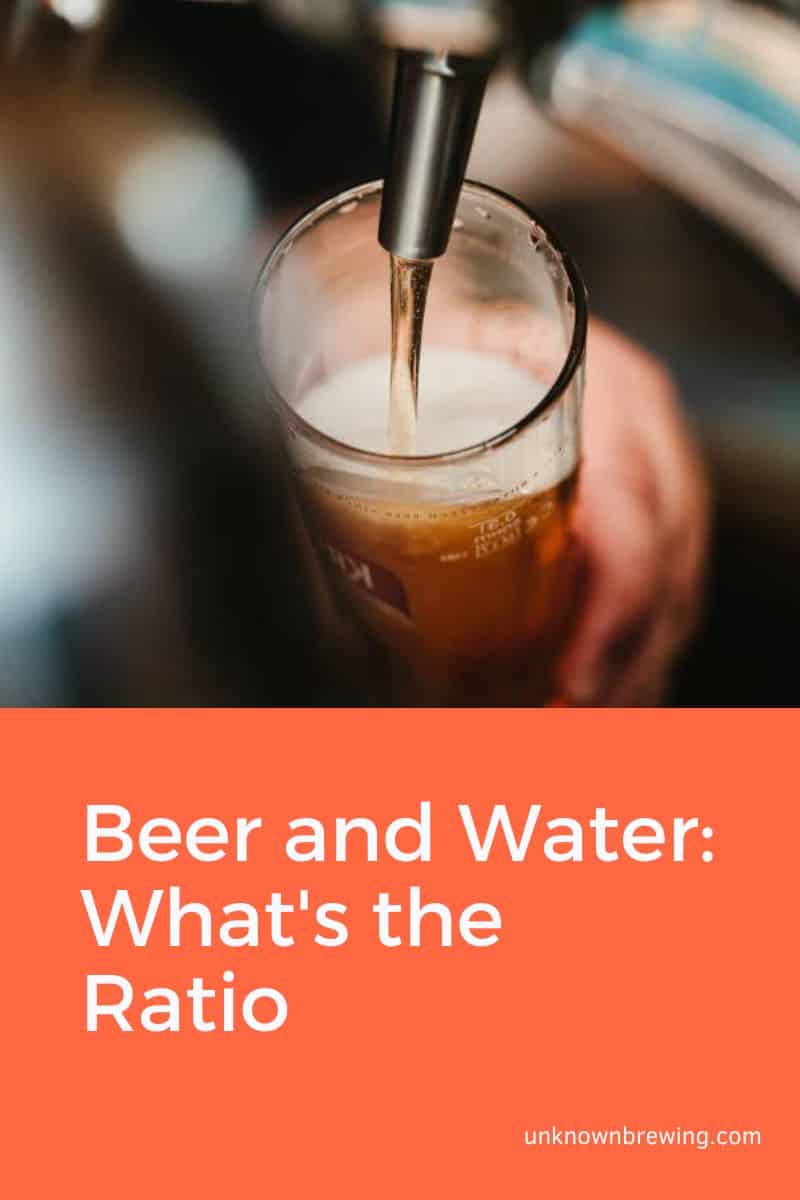Water, without a doubt, is the most valuable ingredient when brewing a beer. Do you know how much water is in a beer?
If not, prepare to be surprised by how much it is. It is so substantial that beer would not exist without it (we are not exaggerating, it is true!). So, today, we will highlight the most overlooked ingredient in beer making – Water.
What Percentage of Water Is in a Beer?
The alcohol content of a beer is the most notable information in a beer bottle. If you see 7% ABV, you’d expect a strong beer coming your way. But what constitutes the remaining 93% of the beer? Here is a hint: you can only live three days without it.
Did you answer water? If yes, congratulations! You’re one step closer to being a beer cicerone. According to The Brewer’s Handbook, most beer contains about 95% water, and the remaining is alcohol. Beer, in short, is mostly water but is barely noticeable because of the flavor of other ingredients.
There are two determining factors on how much water is in a beer. The alcohol by volume (ABV) and the size of the beer:
Measuring Water With ABV
Knowing the ABV of the beer gives us an idea of how much water is in a beer. The National Institute of Health categorized standard drinks’ ABV as the following:
| Beer Category | ABV | Water Percentage |
| Regular Beers | 5% | 95% |
| Light Beers | Less than 4.2% | More than 95.8% |
If you want to compute the water percentage, here is the equation to follow: Water Percentage = 100 – ABV
With this given information, we already know that light beers contain more water than regular beers. It also explains why most light beer tastes watered down in exchange for lower calories. Now let’s look into the amount of water depending on the beer served.
Measuring Water Ounce Based On Beer Bottle Size
The amount of water in a beer depends on the size of the packaging bottle. For better understanding, let’s compare a 12 oz Corona Extra and a 32 oz Corona Familiar considering that they contain 95% water.
Here is the equation to follow: Water oz in beer = Bottle size x 95%
| Beer Bottle Size | Water Percentage | Alcohol |
| 12 oz Corona Extra | 11.4 oz | 0.6 oz |
| 32 oz Corona Familiar | 30.4 oz | 1.6 oz |
The difference in measurement aligns with the ABV of the beers, which is 4.6% and 4.8%, respectively. If you want to measure the amount of water in a pint, the same rules apply. A standard American pint of beer is 16 oz or 473 mL. That means a beer pint has 15.2 oz. of water and 0.8 oz of alcohol.
Is Beer Mostly Water?
Now that we’ve mentioned that beer is 95% water, you’re probably wondering if it’s mostly water. And to answer the question, it’s yes and no.
While most standard beers contain 90 to 95% of water, there are beer styles that have exceedingly high ABV. One of the most popular ones is the Snake Venom Ale by Brewmeister. It has a whopping 67.5% ABV, making it one of the strongest beers ever concocted. However, Bewmeister discontinued its production.
Today, BrewDog and Schorschbräu’s Strength in Numbers has the highest ABV reaching 57.8%. Overall, we cannot downright say that beer is mostly water. Other ingredients of beer include grains, hops, and yeast.
How Much Water Goes Into The Production of Beer?
If you think 95% of water in a beer bottle is high enough, imagine how much more is required to produce a gallon of beer. An average craft brewer brews less than 700 barrels of beer a year, with the majority producing 10,000 barrels annually.
According to the Brewers Association, breweries that did not implement a water conservation plan can consume at least 10 gallons of water to produce one gallon of beer (10:1 ratio). But there are also conservation-minded breweries that can work with a lower water-to-beer ratio of at least 3:1.
Breweries use water not only as a main ingredient for producing beer. They also use it throughout beer production. That includes cleaning, cooling, and packaging. And most water used in this process either vaporizes or is drained.
Another indirect water usage during beer production is the irrigation of the grains (like barley) used for brewing. The amount of water used in beer production is tripled compared to what goes into the final product.
Deschutes Brewery is a sustainable beer brewing company that can produce 300,000 barrels while helping protect waterways. They incorporate advanced technologies in their brewing system to ensure minimal amounts of water are used per production. Today, they are saving 1 million gallons of water per year.
Visualize how the beer brewing process happens by watching this video:
Water In Beer
If you reach this point, you already know how much water goes into the beer brewing process. But what type of water is used to brew a beer? H2O may sound plain and basic, but not in the brewing world where water chemistry is crucial.
Does The Type of Water Matter?
As a general rule in beer brewing, you brew with good-tasting water if you want your beer to taste good. Two elements that can determine it are the mineral content and pH level.
Tap water, for example, contains minerals that can alter the mouthfeel, bitterness, and beer flavor. Mineral content like calcium and magnesium can affect the hardness and softness of your water.
- Hard water can cause a strong bitter taste that is too acidic.
- Soft water from filtered and distilled water allows the hops and malt to balance without an overly exaggerated bitterness.
The mineral content of water also varies depending on your location, so it’s best to check the water chemistry from your local supplier before brewing.
The water pH level is another concerning factor for most breweries. Pure water has a pH level of 7 which is neutral, but lower than that is considered acidic.
Once the grain and water combine during mashing, it should have a pH of 5.2 to 5.6. If it does not follow the range, the enzyme responsible for converting starch to sugar will not function properly.
Brewers measure pH levels using a pH meter to adjust the acidity. Grains can naturally lower the pH of the water, but there are cases when organic acids are needed to reach the desired level. Contrarily, for water with high acidity, baking soda is used instead.
Does The Amount of Water In A Beer Help Hydrate?
The amount of water is not the determining factor if a beer will hydrate you, but it is the alcohol content. So to answer the question if beer can help hydrate, it depends.
The phrase “Beer contains 95% of water” might get stuck in your mind after reading this article. But knowing this is not a hall pass for you to think it is safe to rehydrate your body with beer.
First, you cannot trick your brain that it is mostly water because it’ll still detect the alcohol. And second, you have a kidney that weighs out whether to dump or leave the liquid you ingested.
Yes, standard beer is mostly water, but that doesn’t take away that it contains alcohol — which is a diuretic. A diuretic inhibits the release of hormones that signals your body to hold the water.
Without those hormones, you’ll often go back and forth to the bathroom. And it’s no fun when that happens, especially when you’re having a great day out. Too much beer will only promote water loss and dehydrate you.
Several studies determined if an alcoholic drink can restore fluid balance after exercise-induced dehydration. Results showed that low-alcohol beer quickly rehydrates post-exercise. However, beer with greater than 2% alcohol content can impair rehydration, cause delayed reaction time, and impaired balance.
So the next time you go out for a run and need a refresher, grab a water first. You can always reserve the beer for later.
How Much Water Should I Drink After Having Beer?
Don’t be deceived by the 95% water content in a beer because it can still dehydrate you. And worst, it can exaggerate hangover symptoms. So how do you save yourself from dehydration?
Consume at least 16 oz water for every 12 oz beer you drink. It will help increase your fluid intake despite your multiple bathroom trips. Water can also wash out toxins from alcohol that can damage your skin. For hard liquor, take 16 oz water for every 4 to 6 oz.
If you are not a fan of drinking water while downing a beer, try a low-alcohol beer instead. Low-alcohol beers (less than 2% ABV) do not increase urine output. Thus, maintaining the fluid balance in your system.
Conclusion
Now that you know how much water is in a beer, it is no question why it is considered the main ingredient. Water has many notable characteristics that contribute to the outcome of the beer.
From its profile composition, you can already tell if the beer will have a bitter or balanced taste. Water also controls the beer style a brewer wants. In general, a good beer starts with clean and good-tasting water.

As a homebrewer, Michael would get frustrated about the lack of brewing information on the internet. After hundreds of gallons of spoilt batches, Micheal had enough. And he founded Unknown Brewing as a resource for homebrewers.

